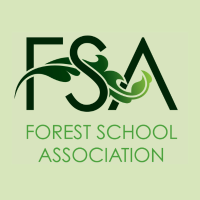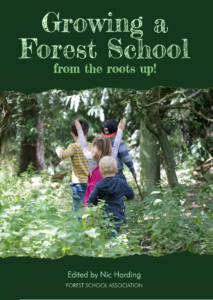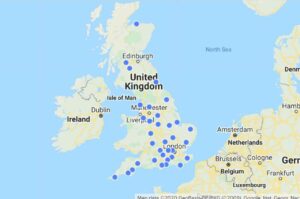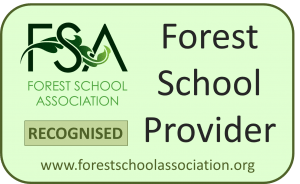Harriet Menter, Scotswood Garden.
Huge apologies to everyone depicted in these doodles. I am no artist and discovered an inability to draw arms. When I drew these I wasn’t planning on sharing them but when Nic asked for contributions for the blog I thought they might offer a different perspective on the conference.
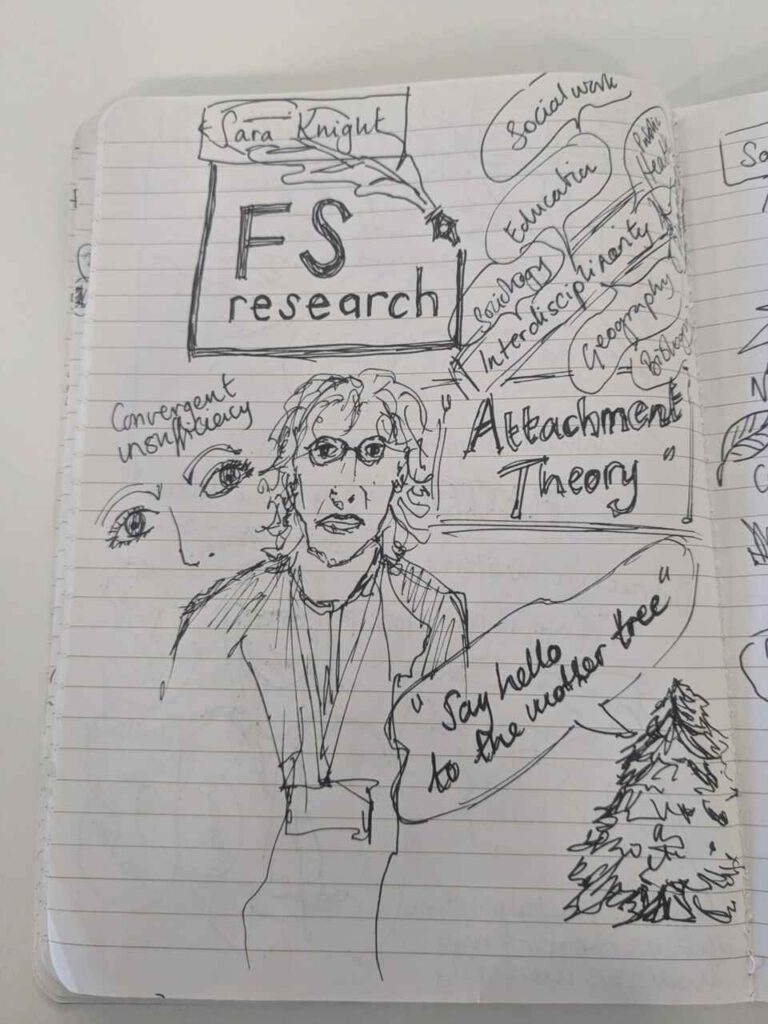
Being at the FSA research symposium we felt we were involved in something important. When I started my forest school journey in 2009 I was surprised by the dearth of good quality research evidencing the impact. 15 years later we are looking at a very different situation.
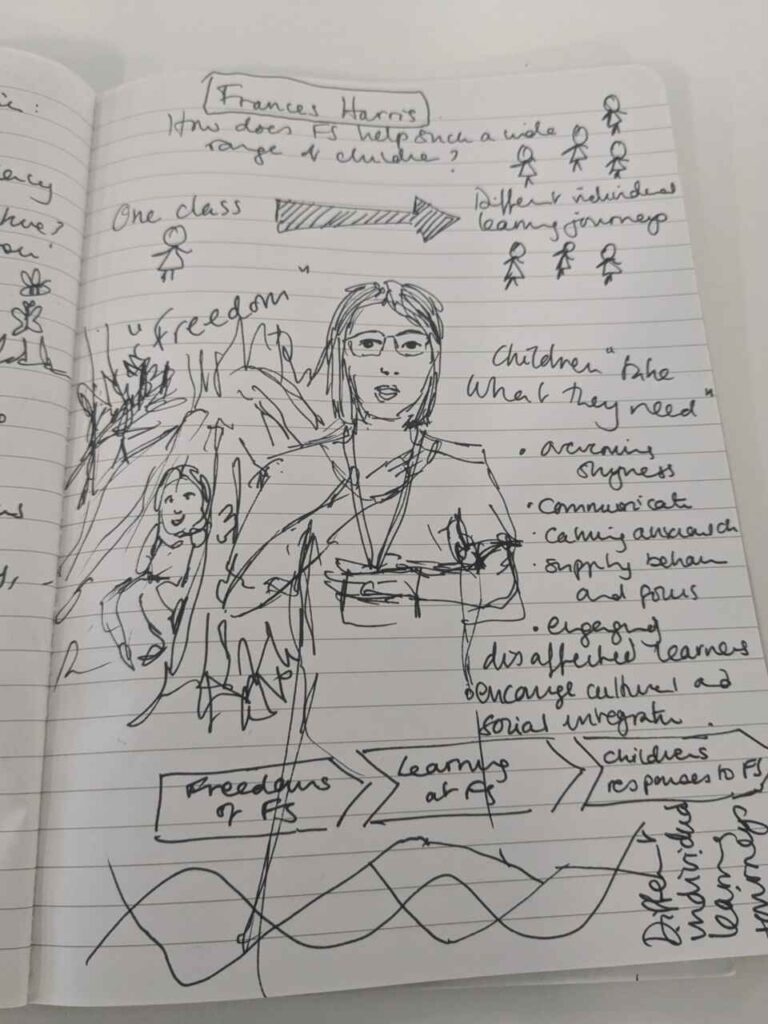
Frances Harris opened with a review of the rich research field we have generated, and noted that these include many “models and theories of forest school”. I was delighted that she included in these the theory of change which Lucy Tiplady developed with partner schools and Scotswood Garden as part of our Breeze research project and the notion that “forest school provides an environment in which children take what they need”. (Sadly Lucy was unable to join us due to illness but played an important role in the conference as part of the organising committee). Harris also stated that these “attempts to identify an underlying theory have not converged yet”. As a necessarily messy practice, where we respond to the needs of the group as we find them; and adapt the ethos to different environments including the highly regulated forests of Singapore, the hot, desert climate of the United Arab Emirates, or the development of pedagogia del bosco in Italy, it may be that one underlying theory will never capture the complexity of what we do.
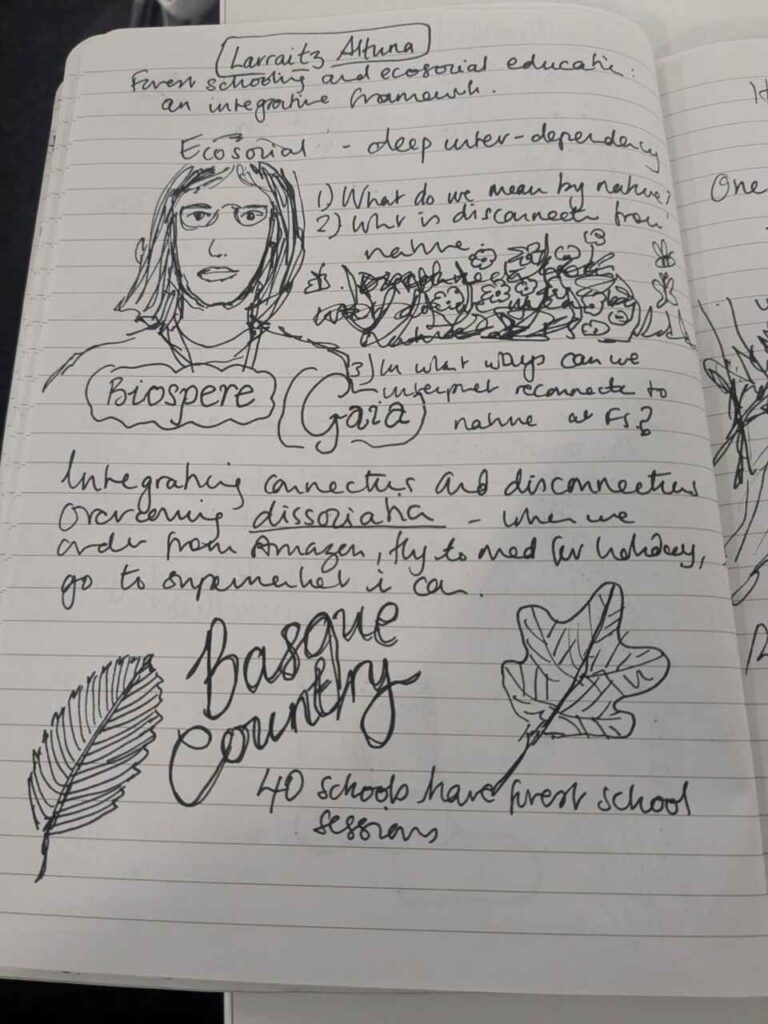
The breadth of the presentations shows how much is going on at forest school, and presenters explained how so many different causal factors lead to impact. From Larraitz Altuna’s focus on the ecosocial, overcoming disconnection from nature and understanding our deep ecological inter-dependency; Joanna Hume’s focus on the way “matter” (mud, sticks, stones etc.) act on the children, Samantha Friedman and Felicity Cooper’s focus on self-determination theory and how this helps us understand why forest school offers such a positive alternative educational model for autistic learners. As Sara Knight says, only with an interdisciplinary approach can we start to understand and explain the magic of forest school.
However two theories that were presented offered a place to start. Harris analysed data she had collected during a year of observations of forest school, and asked “how does forest school help such a wide range of children?” She mapped their different individual learning journeys and showed how the freedoms of forest school allowed children to experience and learn in different ways, leading to different responses in the children such as overcoming shyness, calming anxiety and encouraging social integration.
Hume did not (unfortunately) present the whole of her PhD research which asked “what is so special about forest school?” However in the question and answer session she gave us a sneak peak of a Venn diagram, suggesting 3 overlapping answers. I would like to hear more on this please? (Maybe a Wednesday webinar?).
